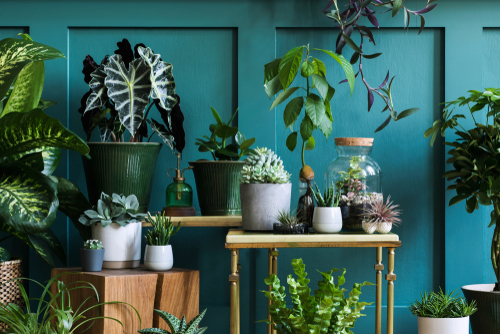Breathe Better, Live Greener
The air inside your home has a quiet influence on your health and wellbeing. We spend most of our lives indoors—yet indoor air is often more polluted than what we breathe outside. From cleaning products to furniture, many common items release toxins that build up in our living spaces over time.
The good news? You don’t need a complicated system to make a difference. With the right plants, better airflow, and a few smart habits, you can create a space that not only looks good—but supports cleaner, healthier breathing every day.
[Ad Banner #1]
Placeholder for the first advertisement.
What’s Lurking in the Air?
Modern homes are built to be airtight for energy efficiency, but that can come at a cost. Without good ventilation, pollutants stay trapped inside. Paints, synthetic fabrics, air fresheners, and even cooking can release volatile organic compounds (VOCs), while mold, pet dander, and dust mites quietly compromise air quality.
Many of these irritants are invisible but linked to headaches, fatigue, allergies, and long-term respiratory issues. That’s why purifying your air isn’t just a luxury—it’s a necessity, especially for children, the elderly, or anyone with asthma or sensitivities.
Nature’s Air Filters: Choosing the Right Plants
Houseplants don’t just liven up a room—they naturally clean the air. Through a process called phytoremediation, certain plants absorb pollutants through their leaves and roots, filtering the air as they grow.
Some of the most effective (and low-maintenance) air-purifying plants include:
-
Snake Plant (Sansevieria): Hardy and tough, perfect for bedrooms
-
Spider Plant: Great for beginners, known to remove formaldehyde and carbon monoxide
-
Peace Lily: Beautiful and powerful, but keep away from pets
-
Pothos: Fast-growing, easy to care for, and effective at VOC absorption
-
Areca Palm: A natural humidifier and air purifier in one
Place a few throughout your home, especially in spaces where you spend a lot of time—like the living room, bedroom, or home office. And don’t forget: healthy plants need clean pots, regular dusting of leaves, and the right light to do their best work.
[Ad Banner #2]
Placeholder for the second advertisement.
Let Your Home Breathe
No plant can solve air quality issues alone. Good airflow is essential. Open windows whenever the weather allows to let fresh air in and stagnant air out. Use exhaust fans in the kitchen and bathroom to remove humidity and prevent mold growth.
If outdoor air quality is poor or you live in a highly polluted area, invest in a HEPA air purifier for the rooms you use most. These machines capture fine particles, allergens, and even some bacteria, providing real relief—especially during allergy season or wildfire smoke events.
Avoid blocking vents and be mindful of airflow in each room. Even simply rearranging furniture to prevent crowding near vents can improve circulation.
Ditch the Pollutants
The products you use every day have a direct impact on your indoor environment. Choose non-toxic, fragrance-free cleaning supplies and avoid aerosol sprays. Candles, incense, and air fresheners often release chemicals like benzene and toluene—so opt for natural alternatives like essential oil diffusers or beeswax candles instead.
Be selective with building materials and furniture too. If you’re painting or bringing in new pieces, look for low-VOC or no-VOC labels. Let new items “off-gas” outdoors or in a ventilated area before bringing them inside.
Even small habits—like taking shoes off at the door or regularly vacuuming with a HEPA filter—help prevent pollutants from building up in the first place.
Realistic, Sustainable Steps
Improving indoor air quality doesn’t require an overhaul. Start with one or two plants, swap out a harsh cleaning product, or commit to opening the windows every morning. These small steps build up over time, creating a cleaner, calmer space to live and breathe in.
Remember: sustainability starts at home, and the air you breathe is part of that equation. Healthier indoor air supports better sleep, stronger focus, fewer allergy symptoms, and a greater sense of peace in your space.
























